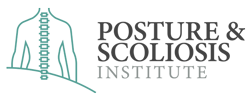Blogs
What is Lumbar Hyperlordosis and How We Treat It

As a chiropractic clinic that focuses on scoliosis treatment and posture correction, we have treated many different spinal conditions, hyperlordosis being one of them. When a patient has an over-pronounced curvature of the lumbar spine, known as hyperlordosis or sway back, we can work to restore the healthy spinal curvatures and work towards improving the spine’s overall health and function utilizing our specialty called Chiropractic Biophysics (CBP). Utilizing this technique allows us to remold the spinal curvatures utilizing our specific approach which includes mirror image exercises and spinal traction.
Spinal curving contributes to increased strength, flexibility, and distribution of mechanical stress during movement of the spine. The health of the spine and its functions are all contingent on these healthy curves. Excessive curving in the lower back is called ‘hyperlordosis.’
Before we explore potential symptoms and treatment options for hyperlordosis, let’s first understand some basic spinal anatomy as well as the role of the spine’s natural curvatures. We will then see how these structures change when hyperlordosis develops.
How a healthy spine is curved
You’ll see that a healthy spine has a soft “S” shape if you examine it from the side. Just as there are three main sections to the human spine, each with its characteristic curvature, so too are there three corresponding curvatures that characterize each section. The spine’s natural and healthy curves, as previously said, give it strength, and flexibility, and allow it to distribute stress evenly throughout the body. When the spine’s natural curvatures are lost, it causes problems throughout the entire spine. The cervical spine is made up of the neck, and it has a c-shaped bend that curves inward toward the body’s middle. The thoracic spine refers to the middle back and has a reverse C-shaped curve that bends outwards, away from the body’s center. The lumbar spine, located in the lower back area, has a C-shaped curvature like the cervical spine. The spinal curves that bend inwards towards a typical C form are known as lordosis, whereas the curvatures that bend outwards away from a reverse C form are referred to as kyphosis. When the spine has an over-pronounced reverse C-shaped curve, this is known as ‘hyperkyphosis’, and when the spine has an over-pronounced C-shaped curve, this is known as hyperlordosis.
Understanding Hyperlordosis
When a person has hyperlordosis, it affects the entire spine since it disrupts its biomechanics. An exaggerated inward curvature of the lumbar spine, ‘swayback’ or ‘saddleback’ is the result of this condition. The condition is not limited to any particular age, although it is uncommon in children. When the lower back’s inward C-shaped curvature becomes more apparent, it influences other areas of the lower body including the stomach and buttocks.
Common Symptoms of Hyperlordosis
A hyperlordosis is characterized by an over-pronounced lumbar spine lordosis. Lower back and/or neck discomfort, restricted mobility, a protruding stomach, and buttocks that are pushed outwards are all possible symptoms.
However, when it comes to spinal conditions, they can generate a wide range of symptoms that vary in severity from person to person. Patients’ age and spinal flexibility are important factors in determining whether or not they will experience any of the aforementioned symptoms, as well as to what extent. Not only does the degree of condition severity determine how noticeable the changes in posture are, but it also dictates symptom intensity. Mild hyperlordosis is associated with a more flexible spine, which makes it less likely to cause pain or mobility limitations. In cases with severe curvature exaggeration, there is a greater chance of developing undesirable symptoms including back and/or neck discomfort as well as obvious postural abnormalities. Let’s now talk about hyperlordosis and the consequences it may have on the body, as well as symptoms that are typical. Let’s move on to what causes its formation in the first place.
Hyperlordosis Causes
The development of hyperlordosis can be attributed to a variety of elements. Hyperlordosis can be caused by poor posture, obesity, a sedentary lifestyle, and different spinal conditions.
Poor Posture
One of the most common causes of hyperlordosis is poor posture. Poor posture affects the body in a number of ways, and as one of the roles of the spine is to help us maintain straight and upright posture, it makes sense that chronic bad posture could greatly impact spinal health. If you spend a lot of time sitting down, especially if you’re slouching, the muscles around your lower back can become tight from trying to support and stabilize your spine. If not corrected, this posture over time will cause the spine to slowly lose its alignment and increase the inward curvature of the lower back. By keeping good posture while sitting and frequently moving around, you can reduce the amount of strain on your lower back muscles.
Obesity
When a person is overweight and has too much fat in their buttocks and midsection, this puts additional strain on the lumbar spine and muscles tasked with supporting and maintaining it. An exaggerated lordosis can develop when the lumbar spine is put under additional strain, causing it to bend unnaturally.
Sedentary Lifestyle
Because the spine is designed to allow for movement, not exercising and living a sedentary lifestyle go against what the spine is supposed to do. Not only can a sedentary lifestyle cause obesity, but it also weakens the muscles around the trunk and pelvis. When the core muscles of the body are deprived of activity, they become less capable of providing appropriate support and stabilization for the spine, making the lumbar region extremely prone to hyperlordosis.
Underlying Spinal Conditions
The spine is a major component of human anatomy, and it can suffer from a variety of ailments. A person may acquire hyperlordosis as a result of another spinal disease in some situations. There are two spinal conditions – kyphosis and spondylolisthesis – that often result in hyperlordosis.
The spine is complicated, with many crucial parts and functions. When a spinal problem arises, it doesn’t just affect one area of the spine because all the curvatures are interdependent.
Kyphosis
An excessive kyphosis (outward curvature) in the thoracic spine can throw off the spine’s entire alignment and cause a counteracting curvature, such as hyperlordosis, to develop below this section of the spinal column. When the spine loses one or more of its healthy curves, the body responds by establishing worse curves in response. As a result, any single abnormal curvature might lead to the loss of additional healthy curvatures as they are supplanted by unnatural ones.
Spondylolisthesis
Spondylolisthesis is a disease that can affect the lumbar vertebrae. It is an illness in which one of the lumbar spine’s vertebrae slips forward onto the adjacent vertebra. When the two vertebrae start rubbing against each other, it erodes the affected disc and vertebrae over time, making the spine less stable and more likely to become misaligned.
How Do You Treat Hyperlordosis?
The treatment for hyperlordosis will be determined by the condition’s underlying cause. The usual causes of hyperlordosis can be treated by addressing relevant postural distortion and utilizing specific spinal tractions to correct these imbalances. The primary condition will be the driving force behind treatment when hyperlordosis is caused by another underlying spinal disease.
At the Posture & Scoliosis Institute, we believe that, rather than focusing on symptoms, the treatment should be focused on correcting the underlying issue. In traditional general medicine, there is often a greater focus on treating the symptoms of a condition rather than understanding and attacking its root cause. This is an essential distinction to grasp because it may determine whether you use medication to live with symptoms or treat the condition that causes them in a proactive way, resulting in longer-lasting relief or cure rather than masking them with prescription pain medications. When hyperlordosis is caused by the presence of another underlying spinal condition, the primary driving force of treatment is addressing the spinal condition that contributed to the development of hyperlordosis. By taking a patient specific approach, we are able to customize treatment plans specifically for each patient by drawing from multiple disciplines.
If you have any further questions, please contact us at www.posturescoliosis.com or email us at info@posturescoliosis.com with any questions.

Posture & Scoliosis Institute
313 Interstate Blvd
Sarasota, FL 34240
| Monday | 8 AM - 5 PM |
| Tuesday | 8 AM - 5 PM |
| Wednesday | 8 AM - 5 PM |
| Thursday | 8 AM - 5 PM |
| Friday | Closed |
| Saturday | Closed |
| Sunday | Closed |
